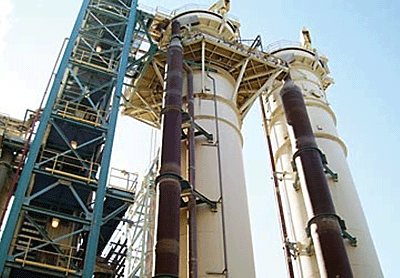Latest in Oxygen and Ozone Bleaching Analyzed at 2013 PEERS Conference
 Print this article | Send to Colleague Print this article | Send to Colleague
 The 2013 TAPPI PEERS Conference in Green Bay, Wis., USA, September 15-18, focuses on advances and emerging developments in the kraft pulping and bleaching arena as well as the chemical recovery island. In the pulp bleaching area, Session 11 on Tuesday, September 17, from 8:30 a.m. – 10 a.m., looks at new approaches with oxygen and ozone and explores results some mills are experiencing. The 2013 TAPPI PEERS Conference in Green Bay, Wis., USA, September 15-18, focuses on advances and emerging developments in the kraft pulping and bleaching arena as well as the chemical recovery island. In the pulp bleaching area, Session 11 on Tuesday, September 17, from 8:30 a.m. – 10 a.m., looks at new approaches with oxygen and ozone and explores results some mills are experiencing.
In the first of two papers in this session, Niclas Andersson of BTG Instruments examines a new sensor tool and control concept that measures the concentration of dissolved lignin in the filtrate portion of pulp suspensions using a unique principle based on optical measurement. A key characteristic of the sensor is the ability to perform the measurement even in the present of pulp fibers, and also that it is pre-calibrated. The sensor has two major applications, partly related—improving efficiency in washing stages, and optimizing chemical charges.
As Andersson explains, pulp washers are critical unit operations that seldom bottleneck production, especially in lines running much above nominal production. At the same time, there is a large optimization potential in finding the balance between using excess of wash liquor, thus directly increasing the energy need in evaporation, and achieving a sufficient purity level of washed pulp going to the bleaching process. Inline probes for conductivity and occasionally refractive index are sometimes used to control washers. Both principles suffer from not measuring the critical dissolved lignin component.
Chemical charging control, Andersson notes, can be optimized taking not only washed fiber kappa but also the dissolved lignin into account. Results from several mill trials have shown that the contribution from dissolved lignin in the filtrate portion of the pulp is up to 30% of the total bleach load (i.e. fiber kappa and filtrate kappa combined) in the bleach plant inlet, and even more up-stream in the fiberline. Hence, chemical savings can be achieved taking this component into account, compared with only measuring the washed fiber kappa.
In the second paper of the oxygen and ozone bleaching session, Brendan Van Wyk with Xylem looks at what he calls "The A to Z Upgrade in Eucalyptus Pulp Bleaching." Van Wyk explains that eucalyptus pulp bleaching was modernized in the 1990s with the industry's conversion to ECF bleaching and the discovery of the high content of hexenuronic acids (HexA) in eucalyptus pulp. Today the use of acid hydrolysis for HexA removal is becoming a common practice and is carried out in the first bleaching stage of sequences such as DHT-EOP-D-P and A/D-EOP-D-P for eucalyptus pulp. However, he says, the needs to lower operating costs and comply with ever stricter ecological regulations still drives the pulp and paper industry to improve on traditional ECF bleaching.
Ozone bleaching, Van Wyk continues, has successfully proved to be an economical and sustainable technology and can be widely implemented to treat the high HexA content found in eucalyptus pulp. The competitive operating costs of Z-ECF bleaching with ozone results not only from the replacement of chlorine dioxide and hydrogen peroxide by ozone but also the opportunity to increase bleach plant closure and therefore extend the use of oxidized white liquor in place of caustic soda. Moreover, such a practice also reduces operating and investment costs in the effluent treatment plant. Nevertheless, the ozone bleaching alternative is still, from time to time, put aside during the discussions for mega pulp mill projects, Van Wyk says. The estimated savings in bleaching chemicals are not always seen as significant enough to justify the risk of implementing "green technology."
Van Wyk's paper describes a new way of using ozone—the combination of a hot acid stage A in front of an ozone stage Z. There is clear industrial evidence, he says, that maximum efficiency from the chemical cost viewpoint is achieved through an A-Z combination, since the acidic extraction of HexA is intelligently complemented with more selective ozone delignification. Extensive lab studies and the optimization work carried out in the four mills running such a process demonstrates that the difference is significant enough to overwhelm the ECF status quo and result in a new breakthrough in eucalyptus pulp, Van Wyk concludes.
More information on the 2013 PEERS Conference, and more information on the International Bioenergy and Bioproducts Conference being held September 18-20 in conjunction with PEERS are available online.
|
|

